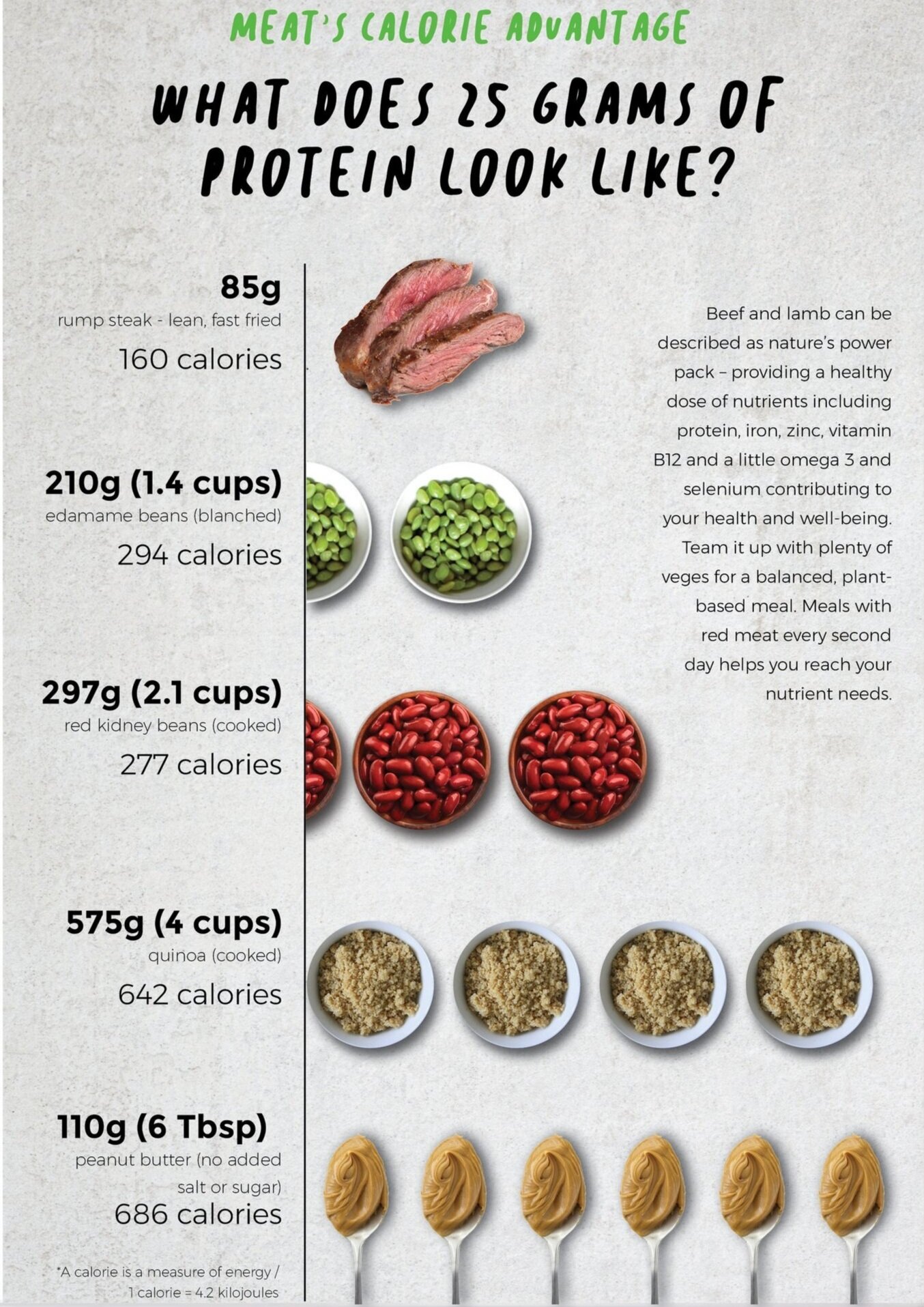Protein is an essential macronutrient needed for many functions in the body including growth, immunity, healthy skin, nails and hair, and recovery. It is found in many foods, including New Zealand beef and lamb.
Not all proteins are created equal
There are two types of protein:
Complete Proteins
If a single food provides all nine of the essential amino acids for human health, it is called a complete or high-quality protein. These are generally found in animal proteins such as red meat, eggs, dairy, poultry, pork, fish and seafood. The exceptions are soy and quinoa.
Beef and lamb are high-quality proteins with an optimum balance of essential amino acids. A serving of 100g of cooked lean beef or lamb provides about 27-30g of protein.
Incomplete Proteins
These come from plant foods and do not contain the full suite of essential amino acids, so are considered incomplete or low-quality protein. These include legumes, beans, peas, grains, nuts and seeds. That’s not to say you can’t get all your amino acids on a vegetarian or vegan diet, but you have to be knowledgeable on how to mix plant-based proteins to ensure you get the full range.
Why choose New Zealand beef and lamb as a protein choice?
Although it’s important to get dietary protein from a variety of sources, beef and lamb are incredibly nutritious sources of protein. For example, to get 25g of protein, you’d need to eat six tablespoons of peanut butter, or four cups of quinoa, at approximately four times the amount of calories of an 85 gram piece of lean rump steak, as outlined below.
So with red meat you’re getting a lot in a little. Let’s not forget the raft of vitamins and minerals such as iron, zinc, selenium and B vitamins we also gain from red meat.
Protein’s nutrient density can also help us to feel fuller for longer, reduce cravings, and helps control appetite, so including protein at each meal may help to achieve or maintain a healthy weight.
Red meat is a high quality protein that is easily digested
Researchers have developed several methods to identify high-quality proteins. One method, the Protein digestibility-corrected amino acid score (PDCAAS), compares different proteins by looking at both their amino acid composition along with how easily the protein is digested. 1.0 is the maximum PDCAAS a food protein can receive and milk and eggs score a 1.0, beef scores a high 0.92. With the exception of soy (0.99), generally animal proteins score higher than plant foods.
How much protein do we need?
A 125g portion of lean beef rump provides 38g of protein - that’s over half of a man’s daily protein needs, and over three quarters of a woman’s.
Who needs more and why?
Because more protein is required during times of growth and development children, adolescents, and pregnant and lactating women require more protein.
Athletes also require more protein due to their increased level of activity. Our muscles require more oxygen when we exercise, so more of the protein that carries oxygen in the blood is required. Protein is also a source of energy and is necessary for muscle growth and repair.
Older adults need 25% more protein than younger adults. Adequate dietary protein along with resistance exercise helps maintain muscle mass and optimise muscle function. Inadequate protein intake in older people is associated with increased skin fragility, decreased immune function, poorer healing, and longer recovery from illness.
Additional protein information to support dietary advice
Why keep animal protein on the plate?
Protein Quality - The nutritional advantage of animal-sourced foods
A nutritional comparison of Protein Foods can be viewed here
What does 25g of protein look like?
A meal plan to provide optimal protein for Older Adults
References
Ministry of Health. 2013. Food and Nutrition Guidelines for Healthy Older People: A background paper. Wellington: Ministry of Health.
Montero-Fernández N., Serra-Rexach JA. (2013). Role of exercise on sarcopenia in the elderly. Eur J Phys Rehab Med: 49 (1): 131-143.
National Health and Medical Research Council (NHMRC), Nutrient Reference Values for Australia and New Zealand including recommended dietary intakes: April, 2014.
Bauer J., Biolo G., Cederholm J., et al. (2013). Recommendations for Optimal Dietary Protein Intake in Older People: A Position Paper From the PROT-AGE Study Group. J Am Med Dir Assoc: 4 (8): 542-559.
University of Otago and Ministry of Health. (2011). A Focus on Nutrition: Key findings of the 2008/09 New Zealand Adult Nutrition Survey. Wellington: Ministry of Health.
Whitney, E., Rolfes, S.R., Crowe, T., Cameron-Smith, D., Walsh, A. (2011). Understanding Nutrition: Australian and New Zealand Edition. 1st edition. Melbourne, Australia




